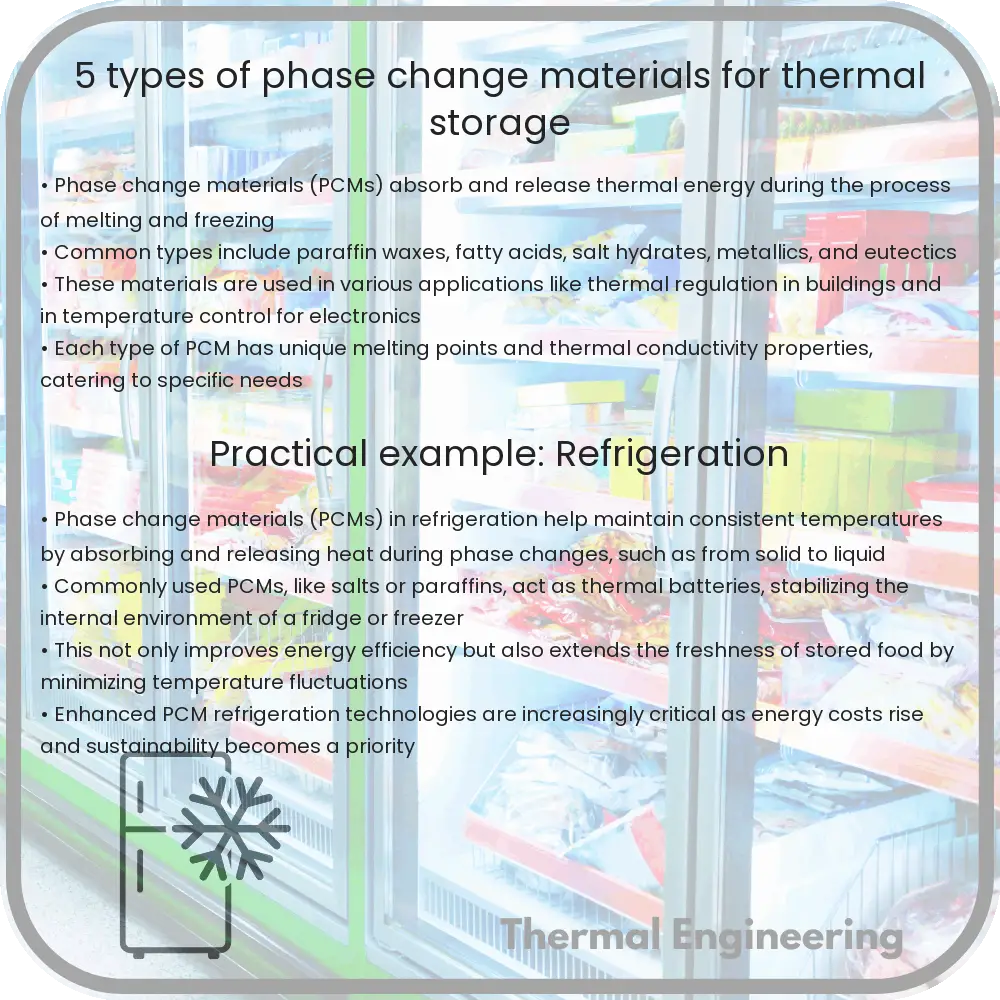Learn about the different types of Phase Change Materials (PCMs) and their applications in thermal management across various industries.

Introduction to Phase Change Materials
Phase Change Materials (PCMs) are substances with a high capacity for thermal energy storage, which absorb or release heat at a specific temperature during the phase change process. PCMs are used in various applications to maintain temperature stability such as in building materials, refrigeration, and electronic systems. Understanding the types of PCMs helps in selecting the right material for specific thermal management needs.
1. Organic PCMs
Organic phase change materials are typically made from paraffin or fatty acids. They are known for their reliability during repeated cycles of melting and freezing. Organic PCMs are non-corrosive, chemically stable, and can operate effectively in domestic and commercial cooling applications. However, their thermal conductivity is relatively low, which can be a limitation for rapid thermal response purposes.
- Paraffin-based PCMs: Popular in thermal management, these materials have a melting point that can be adjusted by changing the carbon chain length.
- Fatty acids: These are ideal for moderate temperature applications and offer minimal supercooling, contributing to a more consistent phase change process.
2. Inorganic PCMs
Inorganic phase change materials include salt hydrates and metallic solutions. These PCMs generally have higher latent heat storage capacity and thermal conductivity than organic PCMs. Challenges with inorganic PCMs include phase segregation and corrosion, which might require additional materials for encapsulation to enhance durability.
- Salt Hydrates: Effective in storing heat at higher temperatures, salt hydrates are beneficial for industrial heat recovery processes.
- Metallic PCMs: These are generally used in high-temperature applications such as in power plants and aerospace technology.
3. Eutectic PCMs
Eutectic PCMs are a blend of two or more materials that melt and solidify at a single, sharp melting point. Eutectics can be either organic, inorganic, or a combination of both. They are used when precise temperature control is needed, and they display a congruent melting and solidification behavior.
- Organic-Organic Eutectics: These combinations often feature adjustable phase change temperatures for diverse applications.
- Inorganic-Organic Eutectics: These provide a symbiotic balance, leveraging higher latent heat and enhanced thermal stability.
4. Bio-based PCMs
Recently, research has focused on bio-based PCMs due to their environmental benefits and renewable sources. These materials, such as biomasses and bio-derived fats, are biodegradable and less toxic, making them attractive for residential use and environmentally sensitive applications.
- Bio-derived Fats: Similar to fatty acids, they offer good thermal storage capacity and lower environmental impact.
- Biomass Materials: They are researched for their innate PCM properties and adaptability across different temperature ranges.
5. Composite PCMs
Composite PCMs are advanced materials that combine various types of PCMs with enhancing additives like graphene, carbon fibers, or metallic nanoparticles to improve thermal conductivity and overall performance. These composites aim to overcome the limitations of pure PCMs, such as suboptimal thermal response and cycling stability.
- PCM-Enhanced Composites: These materials often show increased thermal conductivity and reduced supercooling.
- Nano-enhanced PCMs: By integrating nanoparticles, these composites achieve better heat transfer efficiency and thermal stability.
Conclusion
Phase Change Materials play a crucial role in thermal management solutions across various industries. Whether organic, inorganic, eutectic, bio-based, or composite, each type of PCM offers unique properties and benefits suitable for specific applications. As technology advances, the efficiency and application scope of PCMs are expected to expand, offering new possibilities for energy conservation and thermal regulation.